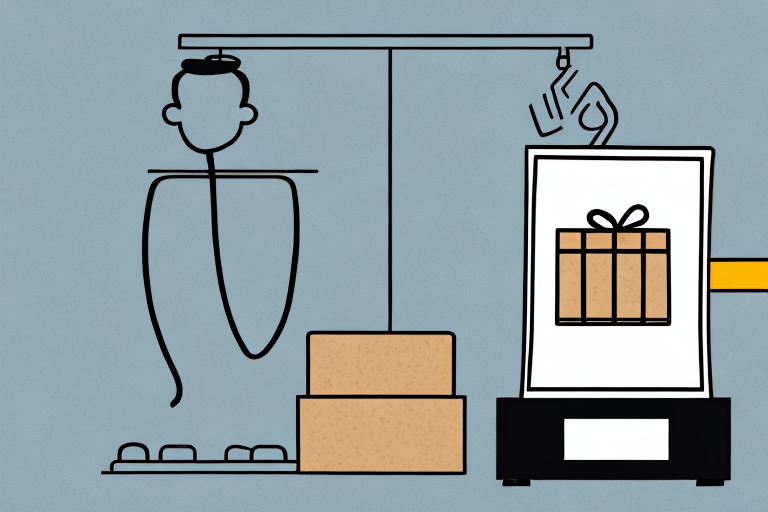Understanding UPS Shipping Rates for Packages Under 2 Lbs
Are you sending packages that weigh less than 2 lbs using UPS? Understanding how shipping rates are determined and the factors that affect them is crucial for optimizing your shipping costs. This article provides a comprehensive overview of UPS shipping rates for packages under 2 lbs, including why UPS stands out as the best carrier for small packages, how shipping rates are calculated, the impact of distance, and more. By the end of this guide, you'll be equipped to choose the most cost-effective shipping service level for your needs and save money on UPS shipping rates.
Why UPS is the Best Carrier for Small Packages
When it comes to shipping small packages, UPS is a top choice due to its reliability and comprehensive service offerings. Here are some reasons why UPS stands out:
- Competitive Rates: UPS offers some of the best shipping rates for packages under 2 lbs, making it a cost-effective option for businesses and individuals alike.
- Fast Transit Times: Customers consistently rate UPS for having some of the fastest transit times in the industry, ensuring timely deliveries.
- Reliable Delivery Performance: With the fewest package disruptions, UPS guarantees high delivery performance and reliability.
- Advanced Tracking Technology: UPS's state-of-the-art tracking system allows you to monitor your package in real-time, from dispatch to delivery.
With these advantages, UPS provides peace of mind, ensuring your packages are delivered on time and in excellent condition.
How Shipping Rates are Determined for Packages Under 2 Lbs
Shipping rates for packages under 2 lbs are influenced by several key factors:
- Weight: UPS categorizes packages under 2 lbs into two groups: those under 1 lb and those between 1-2 lbs. Packages under 1 lb qualify for the UPS Ground service, which offers the most affordable rates.
- Dimensions: The size of your package affects the shipping cost. UPS uses a dimensional weight calculation, which is determined by multiplying the package's length, width, and height, then dividing by a fixed dimensional factor.
- Destination: The distance between the origin and destination plays a critical role. UPS employs a zone-based system, where shipping rates increase with the distance.
By understanding these factors, you can better estimate and manage your shipping costs.
Factors that Affect UPS Shipping Rates for Lightweight Packages
Several factors can influence UPS shipping rates for lightweight packages:
- Package Dimensions: Larger packages that exceed UPS's size restrictions may incur additional fees. For example, packages over 130 inches in dimensional weight via UPS Ground are subject to extra charges.
- Weight Categories: Differentiating between packages that weigh less than 1 lb and those between 1-2 lbs is essential, as they fall under different shipping rate categories.
- Destination Zones: UPS's zone-based pricing means that shipping to more distant zones will cost more.
- Delivery Service Level: Choosing between services like UPS Ground, UPS 2nd Day Air, and UPS Next Day Air affects the overall shipping cost.
By considering these factors, you can optimize your shipping strategy for cost efficiency.
The Role of Distance in Calculating Shipping Rates for Small Packages
Distance is a fundamental component in calculating shipping rates for small packages with UPS. The carrier utilizes a zone-based system comprising nine shipping zones, with Zone 1 being the closest and Zone 9 the farthest from the origin point. The farther the package needs to travel, the higher the shipping rate.
For instance, shipping a package from Zone 1 to Zone 3 will be less expensive than shipping the same package from Zone 1 to Zone 9. Understanding the zone system helps in predicting shipping costs and planning accordingly.
For more detailed information, refer to UPS's official Shipping Zones guide.
Understanding the Different Shipping Zones and Their Impact on Rates
UPS divides the United States into nine distinct shipping zones. Each zone has unique characteristics that influence shipping rates:
- Zone 1: Closest to the origin, typically resulting in the lowest shipping rates.
- Zones 2-4: Moderate distances with incremental rate increases.
- Zones 5-9: Located further from the origin, leading to higher shipping costs.
Additionally, shipping to areas with limited transportation infrastructure, such as rural regions, may incur higher rates due to increased delivery challenges. Conversely, densely populated urban areas might have higher demand, affecting pricing.
Understanding these zones can help you anticipate shipping costs and select the most appropriate service level.
How to Determine the Best Shipping Service Level for Your Package
Choosing the right shipping service level is essential for balancing cost and delivery speed. UPS offers several options for packages under 2 lbs:
- UPS Ground: Ideal for non-urgent shipments, offering the most affordable rates.
- UPS 2nd Day Air: Suitable for packages that need to arrive within two business days.
- UPS Next Day Air: Best for time-sensitive deliveries requiring next-day arrival.
Consider the following factors when selecting a service level:
- Delivery Urgency: How quickly does the package need to arrive?
- Package Size and Weight: Larger or heavier packages may benefit from specific service options.
- Destination: Shipping to distant zones may affect the choice of service level.
By assessing these elements, you can choose a service level that meets your needs while optimizing costs.
Tips for Saving Money on UPS Shipping Rates for Small Packages
Optimizing your shipping strategy can lead to significant savings on UPS shipping rates. Here are some effective tips:
- Choose Less Urgent Delivery Options: Opting for services like UPS Ground can reduce shipping costs when time isn't a critical factor.
- Use Lightweight Packaging Materials: Selecting lighter materials can decrease the overall weight, leading to lower rates.
- Optimize Package Dimensions: Utilize UPS's dimensional weight calculator to ensure your package is sized efficiently. Tightly packing items can minimize wasted space and reduce dimensional weight.
- Leverage UPS's Online Tools: Utilize the UPS shipping calculator to compare rates across different service levels and use their shipping label tool to ensure accurate address and weight information.
Implementing these strategies can help you achieve the best possible shipping rates for your packages under 2 lbs.
Comparing UPS Shipping Rates with Other Carriers for Lightweight Packages
While UPS is a leading carrier for lightweight packages, it's essential to compare its rates and services with other major carriers like FedEx and USPS. Here's how UPS stacks up:
- Competitive Pricing: UPS often provides more competitive rates compared to FedEx, especially for packages under 2 lbs.
- Delivery Performance: UPS is frequently rated higher in terms of delivery reliability and tracking accuracy.
- Service Options: UPS offers a broader range of service levels tailored to specific needs.
However, the best carrier for your needs will depend on various factors, including destination, package specifics, and delivery urgency. It's advisable to compare quotes and service reviews from multiple carriers to make an informed decision.
How to Properly Measure and Weigh Your Package to Avoid Surprises
Accurate measurement and weighing of your package are crucial to avoid unexpected fees and ensure precise shipping rates. Follow these steps:
- Measure Dimensions: Use a reliable tape measure to record the length, width, and height of your package in inches. Always round up to the nearest whole number to avoid underestimation.
- Weigh Your Package: Use a digital scale to determine the weight of your package, rounding up to the nearest whole pound. Include the weight of all packaging materials and accessories.
- Calculate Dimensional Weight: Apply UPS's dimensional weight formula: (Length x Width x Height) ÷ 139. Compare this to the actual weight and use the higher value for billing.
By meticulously measuring and weighing your package, you can ensure accurate shipping rates and prevent additional charges.
Understanding Additional Fees and Surcharges that May Apply to Your Shipment
Besides standard shipping rates, various additional fees and surcharges may apply to your UPS shipment. Understanding these can help you budget accurately:
- Residential Delivery Surcharge: Applies when shipping to residential addresses instead of business locations.
- Address Correction Fee: Charged when the provided address is incorrect or incomplete, requiring UPS to make corrections.
- Oversize Package Surcharge: Imposed on packages that exceed UPS's size or weight limits.
- Fuel Surcharge: A variable fee based on current fuel prices, affecting all shipments.
Being aware of these potential fees allows you to anticipate total shipping costs and avoid unexpected expenses.
The Importance of Accurate Address Information in Avoiding Delivery Delays and Fees
Providing precise and complete address information is vital when shipping small packages with UPS. Accurate addresses help prevent delivery delays and additional fees. Here’s why accuracy matters:
- Preventing Address Correction Fees: Incorrect or incomplete addresses necessitate corrections, leading to extra charges.
- Avoiding Delivery Delays: Mistakes in the address can cause packages to be rerouted, resulting in longer delivery times.
- Ensuring Successful Delivery: Accurate information ensures that your package reaches the intended recipient without issues.
To ensure address accuracy:
- Double-check the recipient's full name, street address, city, state, and ZIP code.
- Use UPS's address verification tools available on their website.
- Include a contact number for the recipient in case UPS needs to reach out for clarification.
How to Track Your Package and Ensure a Smooth Delivery Experience
Tracking your package is essential for a seamless delivery experience. UPS provides robust tracking capabilities that allow you to monitor your package from departure to delivery:
- Real-Time Tracking: Enter your tracking number on the UPS tracking page to see real-time updates on your package's status and location.
- Delivery Notifications: Sign up for email or SMS alerts to receive updates about your package’s progress.
- Exception Management: If any issues arise during transit, such as delays or delivery attempts, UPS will notify you, allowing you to address them promptly.
Effective tracking ensures that you are informed throughout the shipping process and can take necessary actions if any problems occur, leading to a smoother delivery experience.
Conclusion
In this article, we explored the intricacies of UPS shipping rates for packages under 2 lbs. We delved into how shipping rates are determined, the factors influencing these rates, and strategies to save on shipping costs. Additionally, we compared UPS with other carriers, highlighted the importance of accurate measurements and address information, and provided tips for effective package tracking. By applying the insights and guidelines discussed, you can optimize your shipping practices, avoid unnecessary fees, and ensure a reliable delivery experience with UPS.




















